The Unpunished: How Extremists Took Over Israel
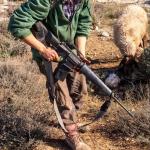
This story is told in three parts. The first documents the unequal system of justice that grew around Jewish settlements in Gaza and the West Bank. The second shows how extremists targeted not only Palestinians but also Israeli officials trying to make peace. The third explores how this movement gained control of the state itself. Taken together, they tell the story of how a radical ideology moved from the fringes to the heart of Israeli political power.
PART I.
IMPUNITY
By the end of October, it was clear that no one was going to help the villagers of Khirbet Zanuta. A tiny Palestinian community, some 150 people perched on a windswept hill in the West Bank near Hebron, it had long faced threats from the Jewish settlers who had steadily encircled it. But occasional harassment and vandalism, in the days after the Oct. 7 Hamas attack, escalated into beatings and murder threats. The villagers made appeal after appeal to the Israeli police and to the ever-present Israeli military, but their calls for protection went largely unheeded, and the attacks continued with no consequences. So one day the villagers packed what they could, loaded their families into trucks and disappeared.
Who bulldozed the village after that is a matter of dispute. The Israeli Army says it was the settlers; a senior Israeli police officer says it was the army. Either way, soon after the villagers left, little remained of Khirbet Zanuta besides the ruins of a clinic and an elementary school. One wall of the clinic, leaning sideways, bore a sign saying that it had been funded by an agency of the European Union providing “humanitarian support for Palestinians at risk of forcible transfer in the West Bank.” Near the school, someone had planted the flag of Israel as another kind of announcement: This is Jewish land now.
Such violence over the decades in places like Khirbet Zanuta is well documented. But protecting the people who carry out that violence is the dark secret of Israeli justice. The long arc of harassment, assault and murder of Palestinians by Jewish settlers is twinned with a shadow history, one of silence, avoidance and abetment by Israeli officials. For many of those officials, it is Palestinian terrorism that most threatens Israel. But in interviews with more than 100 people — current and former officers of the Israeli military, the National Israeli Police and the Shin Bet domestic security service; high-ranking Israeli political officials, including four former prime ministers; Palestinian leaders and activists; Israeli human rights lawyers; American officials charged with supporting the Israeli-Palestinian partnership — we found a different and perhaps even more destabilizing threat. A long history of crime without punishment, many of those officials now say, threatens not only Palestinians living in the occupied territories but also the State of Israel itself.
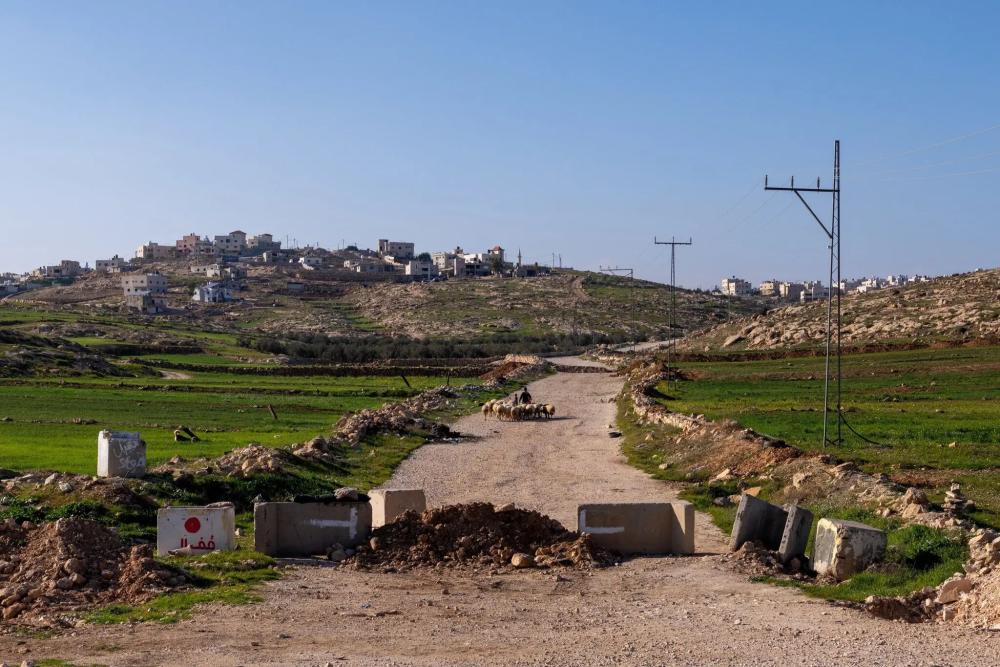
After Oct. 7, some settler reservists began manning unauthorized roadblocks in full I.D.F. uniform, an open but usually unpunished violation of orders.Credit...Peter van Agtmael/Magnum, for The New York Times
Many of the people we interviewed, some speaking anonymously, some speaking publicly for the first time, offered an account not only of Jewish violence against Palestinians dating back decades but also of an Israeli state that has systematically and increasingly ignored that violence. It is an account of a sometimes criminal nationalistic movement that has been allowed to operate with impunity and gradually move from the fringes to the mainstream of Israeli society. It is an account of how voices within the government that objected to the condoning of settler violence were silenced and discredited. And it is a blunt account, told for the first time by Israeli officials themselves, of how the occupation came to threaten the integrity of their country’s democracy.
The interviews, along with classified documents written in recent months, reveal a government at war with itself. One document describes a meeting in March, when Maj. Gen. Yehuda Fox, the head of Israel’s Central Command, responsible for the West Bank, gave a withering account of the efforts by Bezalel Smotrich — an ultraright leader and the official in Prime Minister Benjamin Netanyahu’s government with oversight over the West Bank — to undermine law enforcement in the occupied territory. Since Smotrich took office, Fox wrote, the effort to clamp down on illegal settlement construction has dwindled “to the point where it has disappeared.” Moreover, Fox said, Smotrich and his allies were thwarting the very measures to enforce the law that the government had promised Israeli courts it would take.
This is a story, pieced together and told in full for the first time, that leads to the heart of Israel. But it begins in the West Bank, in places like Khirbet Zanuta. From within the village’s empty ruins, there is a clear view across the valley to a tiny Jewish outpost called Meitarim Farm. Built in 2021, the farm has become a base of operations for settler attacks led by Yinon Levi, the farm’s owner. Like so many of the Israeli outposts that have been set up throughout the West Bank in recent years, Meitarim Farm is illegal. It is illegal under international law, which most experts say doesn’t recognize Israeli settlements in occupied land. It is illegal under Israeli law, like most settlements built since the 1990s.
Few efforts are made to stop the building of these outposts or the violence emanating from them. Indeed, one of Levi’s day jobs was running an earthworks company, and he has worked with the Israel Defense Forces to bulldoze at least one Palestinian village in the West Bank. As for the victims of that violence, they face a confounding and defeating system when trying to get relief. Villagers seeking help from the police typically have to file a report in person at an Israeli police station, which in the West Bank are almost exclusively located inside the settlements themselves. After getting through security and to the station, they sometimes wait for hours for an Arabic translator, only to be told they don’t have the right paperwork or sufficient evidence to submit a report. As one senior Israeli military official told us, the police “exhaust Palestinians so they won’t file complaints.”
And yet in November, with no protection from the police or the military, the former residents of Khirbet Zanuta and five nearby villages chose to test whether justice was still possible by appealing directly to Israel’s Supreme Court. In a petition, lawyers for the villagers, from Haqel, an Israeli human rights organization, argued that days after the Oct. 7 Hamas attack, a raiding party that included settlers and Israeli soldiers assaulted village residents, threatened murder and destroyed property throughout the village. They stated that the raid was part of “a mass transfer of ancient Palestinian communities,” one in which settlers working hand in hand with soldiers are taking advantage of the current war in Gaza to achieve the longer-standing goal of “cleansing” parts of the West Bank, aided by the “sweeping and unprecedented disregard” of the state and its “de facto consent to the massive acts of deportation.”
The Supreme Court agreed to hear the case, and the relief the villagers are seeking — that the law be enforced — might seem modest. But our reporting reveals the degree to which decades of history are stacked against them: After 50 years of crime without punishment, in many ways the violent settlers and the state have become one.
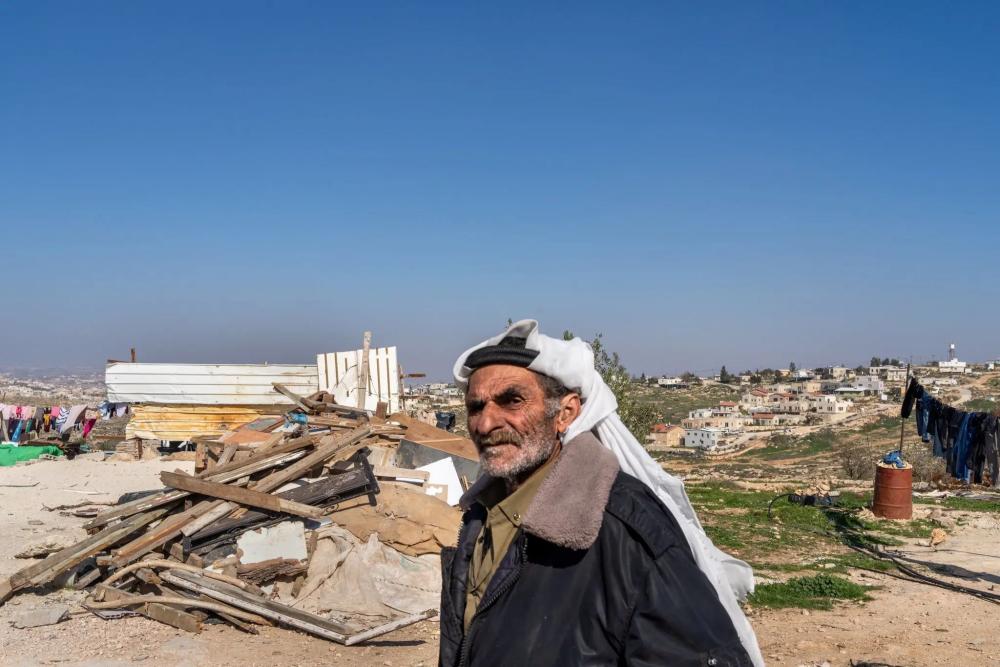
Iskhak Jabarin near his home in Shab al Butum. He is part of a petition to Israel’s Supreme Court seeking protection from settlers, including those from Avigayil, the settlement behind him at right.Credit...Peter van Agtmael/Magnum, for The New York Times
SEPARATE AND UNEQUAL
The devastating Hamas attacks in Israel on Oct. 7, the ongoing crisis of Israeli hostages and the grinding Israeli invasion and bombardment of the Gaza Strip that followed may have refocused the world’s attention on Israel’s ongoing inability to address the question of Palestinian autonomy. But it is in the West Bank where the corrosive long-term effects of the occupation on Israeli law and democracy are most apparent.
A sample of three dozen cases in the months since Oct. 7 shows the startling degree to which the legal system has decayed. In all the cases, involving misdeeds as diverse as stealing livestock and assault and arson, not a single suspect was charged with a crime; in one case, a settler shot a Palestinian in the stomach while an Israel Defense Forces soldier looked on, yet the police questioned the shooter for only 20 minutes, and never as a criminal suspect, according to an internal Israeli military memo. During our review of the cases, we listened to recordings of Israeli human rights activists calling the police to report various crimes against Palestinians. In some of the recordings, the police refused to come to the scene, claiming they didn’t know where the villages were; in one case, they mocked the activists as “anarchists.” A spokesman for the Israeli National Police declined to respond to repeated queries about our findings.
The violence and impunity that these cases demonstrate existed long before Oct. 7. In nearly every month before October, the rate of violent incidents was higher than during the same month in the previous year. And Yesh Din, an Israeli human rights group, looking at more than 1,600 cases of settler violence in the West Bank between 2005 and 2023, found that just 3 percent ended in a conviction. Ami Ayalon, the head of Shin Bet from 1996 to 2000 — speaking out now because of his concern about Israel’s systemic failure to enforce the law — says this singular lack of consequences reflects the indifference of the Israeli leadership going back years. “The cabinet, the prime minister,” he says, “they signal to the Shin Bet that if a Jew is killed, that’s terrible. If an Arab is killed, that’s not good, but it’s not the end of the world.”
Ayalon’s assessment was echoed by many other officials we interviewed. Mark Schwartz, a retired American three-star general, was the top military official working at the United States Embassy in Jerusalem from 2019 to 2021, overseeing international support efforts for the partnership between Israel and the Palestinian Authority. “There’s no accountability,” he says now of the long history of settler crimes and heavy-handed Israeli operations in the West Bank. “These things eat away at trust and ultimately the stability and security of Israel and the Palestinian territories. It’s undeniable.”
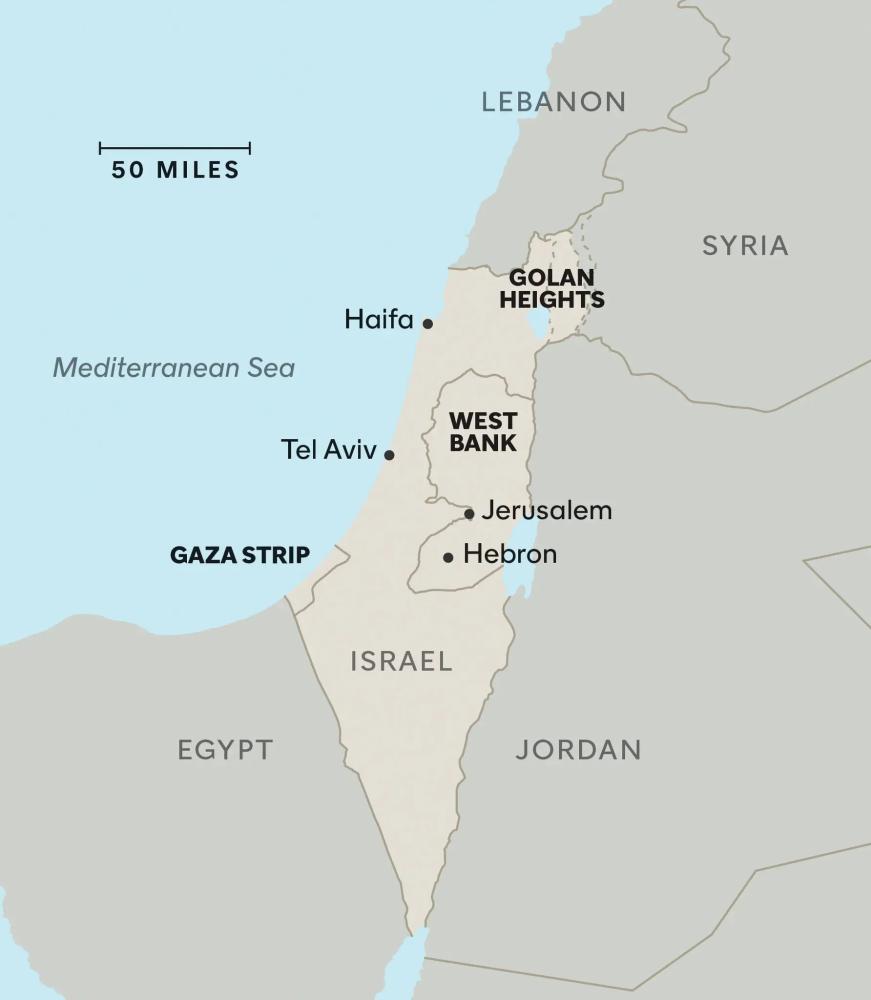
After the Arab-Israeli War of 1967, Israel controlled new territory in the West Bank, the Gaza Strip, the Sinai Peninsula, the Golan Heights and East Jerusalem. In 1979, it agreed to return the Sinai Peninsula to Egypt.Credit...The New York Times
How did a young nation turn so quickly on its own democratic ideals, and at what price? Any meaningful answer to these questions has to take into account how a half-century of lawless behavior that went largely unpunished propelled a radical form of ultranationalism to the center of Israeli politics. This is the history that is told here in three parts. In Part I, we describe the origins of a religious movement that established Jewish settlements in the newly won territories of Gaza and the West Bank during the 1970s. In Part II, we recount how the most extreme elements of the settler movement began targeting not only Palestinians but also Israeli leaders who tried to make peace with them. And in Part III, we show how the most established members of Israel’s ultraright, unpunished for their crimes, gained political power in Israel, even as a more radical generation of settlers vowed to eliminate the Israeli state altogether.
Many Israelis who moved to the West Bank did so for reasons other than ideology, and among the settlers, there is a large majority who aren’t involved in violence or other illegal acts against Palestinians. And many within the Israeli government fought to expand the rule of law into the territories, with some success. But they also faced harsh pushback, with sometimes grave personal consequences. Prime Minister Yitzhak Rabin’s efforts in the 1990s, on the heels of the First Intifada, to make peace with Yasir Arafat, chairman of the Palestine Liberation Organization, gave rise to a new generation of Jewish terrorists, and they ultimately cost him his life.
The disagreement over how to handle the occupied territories and their residents has bred a complex and sometimes opaque system of law enforcement. At its heart are two separate and unequal systems of justice: one for Jews and another for Palestinians.
The West Bank is under the command of the I.D.F., which means that Palestinians are subject to a military law that gives the I.D.F. and the Shin Bet considerable authority. They can hold suspects for extended periods without trial or access to either a lawyer or the evidence against them. They can wiretap, conduct secret surveillance, hack into databases and gather intelligence on any Arab living in the occupied territory with few restrictions. Palestinians are subject to military — not civilian — courts, which are far more punitive when it comes to accusations of terrorism and less transparent to outside scrutiny. (In a statement, the I.D.F. said, “The use of administrative detention measures is only carried out in situations where the security authorities have reliable and credible information indicating a real danger posed by the detainee to the region’s security, and in the absence of other alternatives to remove the risk.” It declined to respond to multiple specific queries, in some cases saying “the events are too old to address.”)
According to a senior Israeli defense official, since Oct. 7, some 7,000 settler reservists were called back by the I.D.F., put in uniform, armed and ordered to protect the settlements. They were given specific orders: Do not leave the settlements, do not cover your faces, do not initiate unauthorized roadblocks. But in reality many of them have left the settlements in uniform, wearing masks, setting up roadblocks and harassing Palestinians.
All West Bank settlers are in theory subject to the same military law that applies to Palestinian residents. But in practice, they are treated according to the civil law of the State of Israel, which formally applies only to territory within the state’s borders. This means that Shin Bet might probe two similar acts of terrorism in the West Bank — one committed by Jewish settlers and one committed by Palestinians — and use wholly different investigative tools.
In this system, even the question of what behavior is being investigated as an act of terror is different for Jews and Arabs. For a Palestinian, the simple admission of identifying with Hamas counts as an act of terrorism that permits Israeli authorities to use severe interrogation methods and long detention. Moreover, most acts of violence by Arabs against Jews are categorized as a “terror” attack — giving Shin Bet and other services license to use the harshest methods at their disposal.
The job of investigating Jewish terrorism falls to a division of Shin Bet called the Department for Counterintelligence and Prevention of Subversion in the Jewish Sector, known more commonly as the Jewish Department. It is dwarfed both in size and prestige by Shin Bet’s Arab Department, the division charged mostly with combating Palestinian terrorism. And in the event, most incidents of settler violence — torching vehicles, cutting down olive groves — fall under the jurisdiction of the police, who tend to ignore them. When the Jewish Department investigates more serious terrorist threats, it is often stymied from the outset, and even its successes have sometimes been undermined by judges and politicians sympathetic to the settler cause. This system, with its gaps and obstructions, allowed the founders of groups advocating extreme violence during the 1970s and 1980s to act without consequences, and today it has built a protective cocoon around their ideological descendants.
Some of these people now run Israel. In 2022, just 18 months after losing the prime ministership, Benjamin Netanyahu regained power by forming an alliance with ultraright leaders of both the Religious Zionism Party and the Jewish Power party. It was an act of political desperation on Netanyahu’s part, and it ushered into power some truly radical figures, people — like Smotrich and Itamar Ben-Gvir — who had spent decades pledging to wrest the West Bank and Gaza from Arab hands. Just two months earlier, according to news reports at the time, Netanyahu refused to share a stage with Ben-Gvir, who had been convicted multiple times for supporting terrorist organizations and, in front of television cameras in 1995, vaguely threatened the life of Rabin, who was murdered weeks later by an Israeli student named Yigal Amir.
Now Ben-Gvir was Israel’s national security minister and Smotrich was Israel’s finance minister, charged additionally with overseeing much of the Israeli government’s activities in the West Bank. In December 2022, a day before the new government was sworn in, Netanyahu issued a list of goals and priorities for his new cabinet, including a clear statement that the nationalistic ideology of his new allies was now the government’s guiding star. “The Jewish people,” it said, “have an exclusive and inalienable right to all parts of the land of Israel.”
Two months after that, two Israeli settlers were murdered in an attack by Hamas gunmen near Huwara, a village in the West Bank. The widespread calls for revenge, common after Palestinian terror attacks, were now coming from within Netanyahu’s new government. Smotrich declared that “the village of Huwara needs to be wiped out.”
And, he added, “I think the State of Israel needs to do it.”
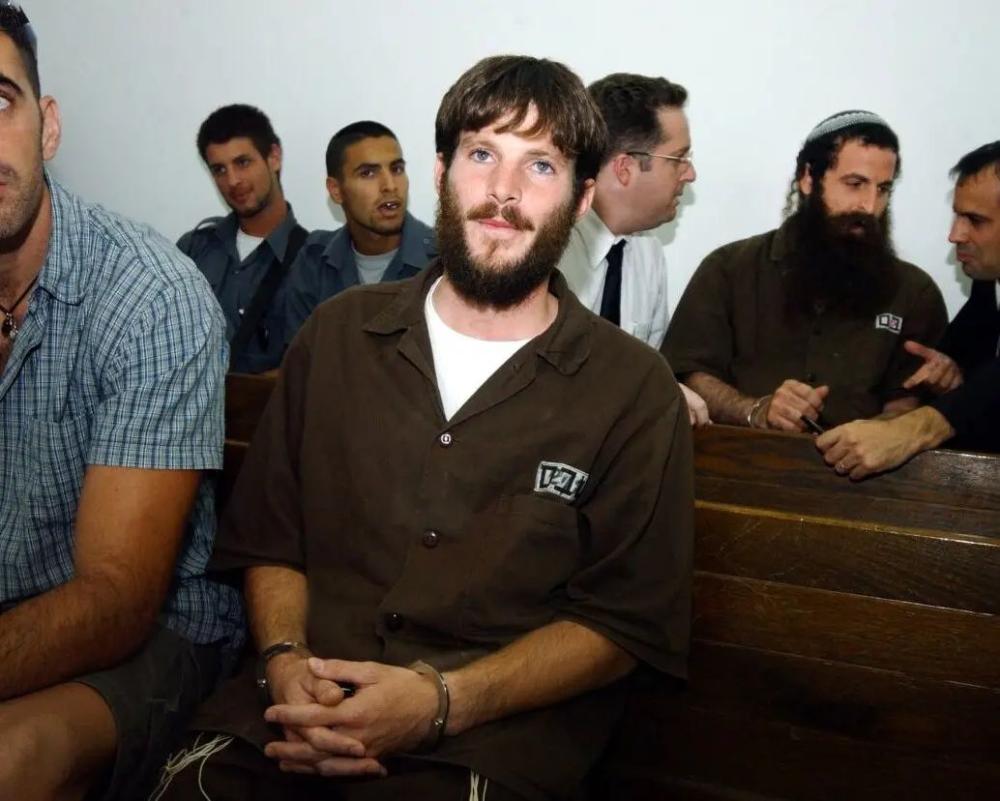
In 2005, Israeli authorities arrested Bezalel Smotrich after hearing of a plot to slow the Israeli withdrawal from Gaza. Smotrich was later released without charges. One Shin Bet officer who questioned him said he remained “silent as a fish” throughout.Credit...Moti Kimchi
BIRTH OF A MOVEMENT
With its overwhelming victory in the Arab-Israeli War of 1967, Israel more than doubled the amount of land it controlled, seizing new territory in the West Bank, the Gaza Strip, the Sinai Peninsula, the Golan Heights and East Jerusalem. Now it faced a choice: Would the new land become part of Israel or be bargained away as part of a future Palestinian state? To a cadre of young Israelis imbued with messianic zeal, the answer was obvious. The acquisition of the territories animated a religious political movement — Gush Emunim, or “Bloc of the Faithful” — that was determined to settle the newly conquered lands.
Gush Emunim followers believed that the coming of the messiah would be hastened if, rather than studying holy books from morning to night, Jews settled the newly occupied territories. This was the land of “Greater Israel,” they believed, and there was a pioneer spirit among the early settlers. They saw themselves as direct descendants of the earliest Zionists, who built farms and kibbutzim near Palestinian villages during the first part of the 20th century, when the land was under British control. But while the Zionism of the earlier period was largely secular and socialist, the new settlers believed they were advancing God’s agenda.
The legality of that agenda was an open question. The Geneva Conventions, to which Israel was a signatory, forbade occupying powers to deport or transfer “parts of its own civilian population into the territory it occupies.” But the status of the territory was, in the view of many within and outside the Israeli government, more complex. The settlers sought to create what some of them called “facts on the ground.” This put them into conflict with both the Palestinians and, at least putatively, the Israeli authorities responsible for preventing the spread of illegal settlements.
Whether or not the government would prove flexible on these matters became clear in April 1975 at Ein Yabrud, an abandoned Jordanian military base near Ofra, in the West Bank. A group of workers had been making the short commute from Israel most days for months to work on rebuilding the base, and one evening they decided to stay. They were aiming to establish a Jewish foothold in Judea and Samaria, the Israeli designation for the territories that make up the West Bank, and they had found a back door that required only the slightest push. Their leader met that same night with Shimon Peres, then Israel’s defense minister, who told the I.D.F. to stand down. Peres would treat the nascent settlement not as a community but as a “work camp” — and the I.D.F. would do nothing to hinder their work.
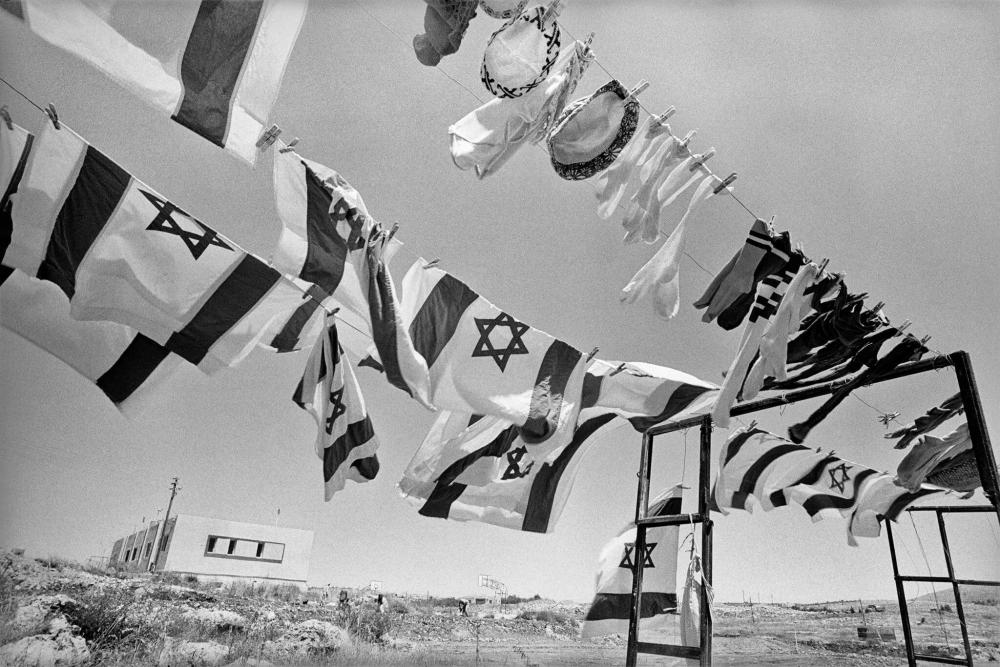
A clothesline in Ofra in 1979.Credit...Micha Bar-Am/Magnum Photos
Peres’s maneuver was partly a sign of the weakness of Israel’s ruling Labor party, which had dominated Israeli politics since the country’s founding. The residual trauma of the Yom Kippur War in 1973 — when Israel was caught completely by surprise by Egyptian and Syrian forces before eventually beating back the invading armies — had shaken citizens’ belief in their leaders, and movements like Gush Emunim, directly challenging the authority of the Israeli state, had gained momentum amid Labor’s decline. This, in turn, energized Israel’s political right.
By the late 1970s, the settlers, bolstered in part by growing political support, were expanding in number. Carmi Gillon, who joined Shin Bet in 1972 and rose by the mid-1990s to become its director, recalls the evolving internal debates. Whose responsibility was it to deal with settlers? Should Israel’s vaunted domestic security service enforce the law in the face of clearly illegal acts of settlement? “When we realized that Gush Emunim had the backing of so many politicians, we knew we shouldn’t touch them,” he said in his first interview for this article in 2016.
One leader of the ultraright movement would prove hard to ignore, however. Meir Kahane, an ultraright rabbi from Flatbush, Brooklyn, had founded the militant Jewish Defense League in 1968 in New York. He made no secret of his belief that violence was sometimes necessary to fulfill his dream of Greater Israel, and he even spoke of plans to buy .22 caliber rifles for Jews to defend themselves. “Our campaign motto will be, ‘Every Jew a .22,’” he declared. In 1971, he received a suspended sentence on bomb-making charges, and at the age of 39 he moved to Israel to start a new life. From a hotel on Zion Square in Jerusalem, he started a school and a political party, what would become Kach, and drew followers with his fiery rhetoric.
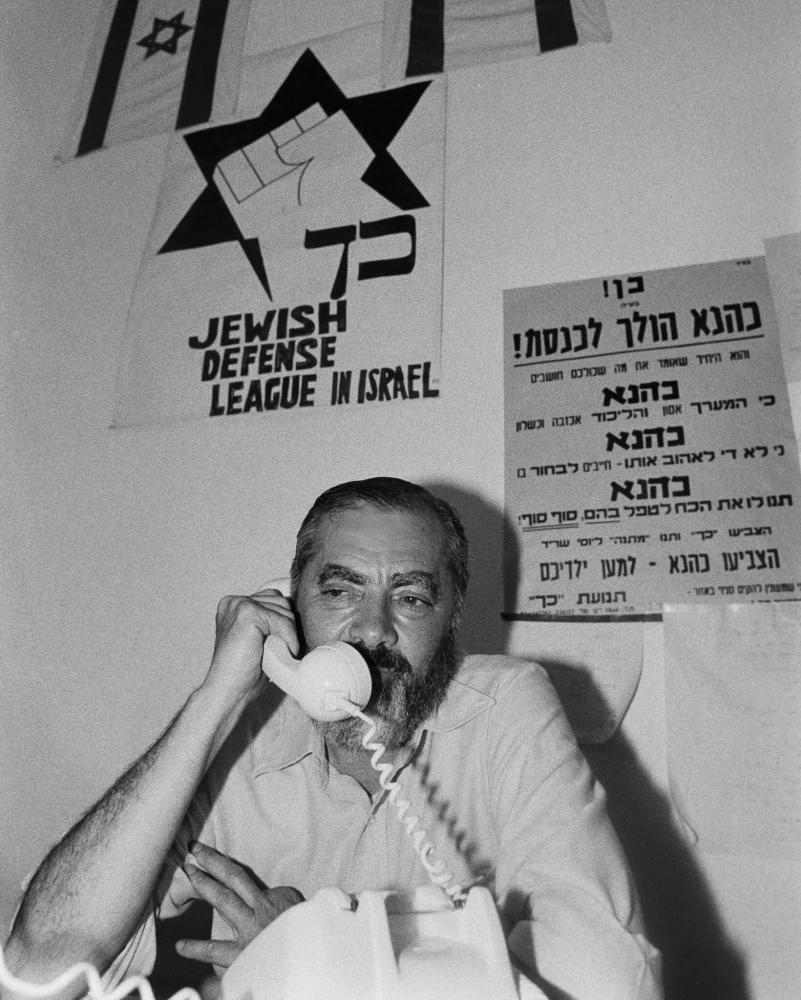
Meir Kahane, the militant rabbi from Brooklyn, in 1984, just after his election to the Knesset.Credit...Benami Neumann/Gamma-Rapho, via Getty Images
Kahane said he wanted to rewrite the stereotype of Jews as victims, and he argued, in often vivid terms, that Zionism and democracy are in fundamental tension. “Zionism came into being to create a Jewish state,” Kahane said in an interview with The Times in 1985, five years before he was assassinated by a gunman in New York. “Zionism declares that there is going to be a Jewish state with a majority of Jews, come what may. Democracy says, ‘No, if the Arabs are the majority then they have the right to decide their own fate.’ So Zionism and democracy are at odds. I say clearly that I stand with Zionism.”
A BURIED REPORT
In 1977, the Likud party led a coalition that, for the first time in Israeli history, secured a right-wing majority in the country’s Parliament, the Knesset. The party was headed by Menachem Begin, a veteran of the Irgun, a paramilitary organization that carried out attacks against Arabs and British authorities in Mandatory Palestine, the British colonial entity that preceded the creation of Israel. Likud — Hebrew for “the alliance” — was itself an amalgam of several political parties. Kach itself was still on the outside and would always remain so. But its radical ideas and ambitions were moving closer to the mainstream.
Likud’s victory came 10 years after the war that brought Israel vast amounts of new land, but the issue of what to do with the occupied territories had yet to be resolved. As the new prime minister, Begin knew that addressing that question would mean addressing the settlements. Could there be a legal basis for taking the land? Something that would allow the settlements to expand with the full support of the state?
It was Plia Albeck, then a largely unknown bureaucrat in the Israeli Justice Ministry, who found Begin’s answer. Searching through the regulations of the Ottoman Empire, which ruled Palestine in the years preceding the British Mandate, she lit upon the Ottoman Land Code of 1858, a major effort at land reform. Among other provisions, the law enabled the sultan to seize any land that had not been cultivated by its owners for a number of years and that was not “within shouting distance” of the last house in the village. It did little to address the provisions of the Geneva Convention, but it was, for her department, precedent enough. Soon Albeck was riding in an army helicopter, mapping the West Bank and identifying plots of land that might meet the criteria of the Ottoman law. The Israeli state had replaced the sultan, but the effect was the same. Albeck’s creative legal interpretation led to the creation of more than 100 new Jewish settlements, which she referred to as “my children.”
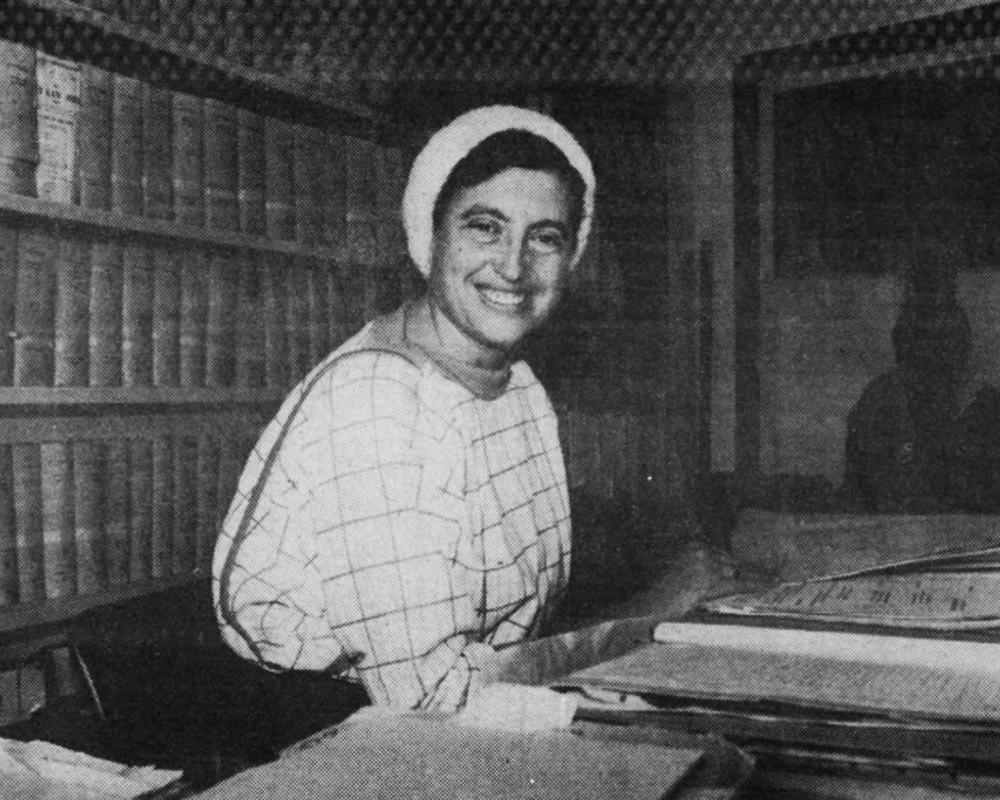
Plia Albeck in 1987. Working from the Israeli Justice Ministry, she used the Ottoman Land Code of 1858 as a precedent to establish more than 100 new Jewish settlements in the West Bank. Credit...HaOlam HaZeh
At the same time, Begin was quietly brokering a peace deal with President Anwar Sadat of Egypt in the United States at Camp David. The pact they eventually negotiated gave the Sinai Peninsula back to Egypt and promised greater autonomy to Palestinians in the occupied territories in return for normalized relations with Israel. It would eventually win the two leaders a joint Nobel Peace Prize. But Gush Emunim and other right-wing groups saw the accords as a shocking reversal. From this well of anger sprang a new campaign of intimidation. Rabbi Moshe Levinger, one of the leaders of Gush Emunim and the founder of the settlement in the heart of Hebron, declared the movement’s purposes on Israeli television. The Arabs, he said, “must not be allowed to raise their heads.”
Leading this effort would be a militarized offshoot of Gush Emunim called the Jewish Underground. The first taste of what was to come arrived on June 2, 1980. Car bombs exploded as part of a complex assassination plot against prominent Palestinian political figures in the West Bank. The attack blew the legs off Bassam Shaka, the mayor of Nablus; Karim Khalaf, the mayor of Ramallah, was forced to have his foot amputated. Kahane, who in the days before the attack said at a news conference that the Israeli government should form a “Jewish terrorist group” that would “throw bombs and grenades to kill Arabs,” applauded the attacks, as did Rabbi Haim Druckman, a leader of Gush Emunim then serving in the Knesset, and many others within and outside the movement. Brig. Gen. Binyamin Ben-Eliezer, then the top I.D.F. commander in the West Bank, noting the injuries suffered by the Palestinian mayors under his watch, said simply, “It’s a shame they didn’t hit them a bit higher.” An investigation began, but it would be years before it achieved any results. Ben-Eliezer went on to become a leader of the Labor party and defense minister.
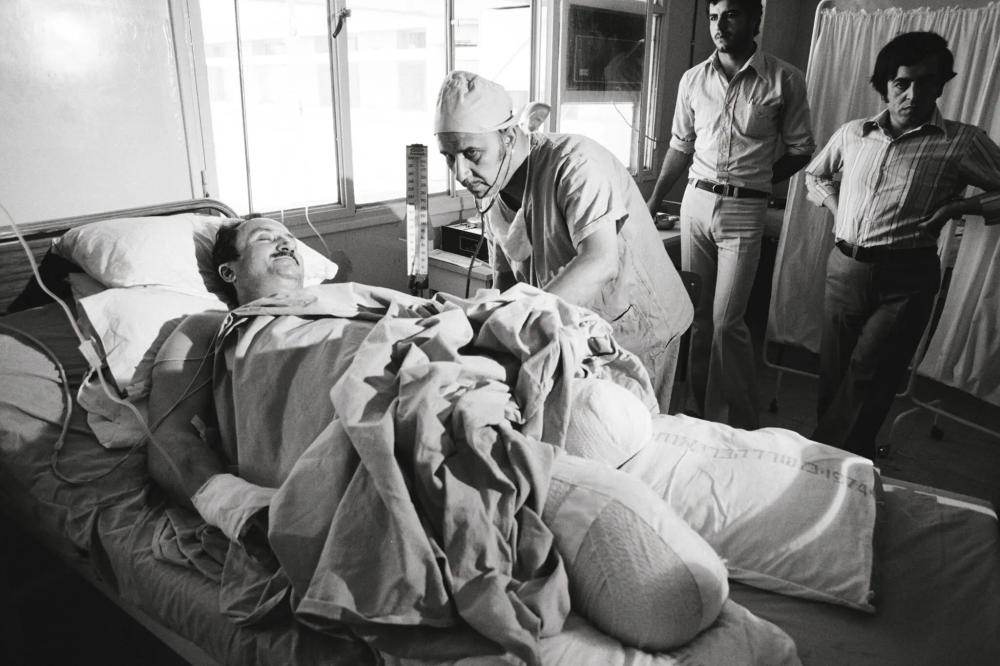
Bassam Shaka, the mayor of Nablus, in the hospital after a bomb attack by Jewish terrorists in 1980 blew off both of his legs.Credit...David Rubinger, via Getty Images
The threat that the unchecked attacks posed to the institutions and guardrails of Jewish democracy wasn’t lost on some members of the Israeli elite. As the violence spread, a group of professors at Tel Aviv University and Hebrew University in Jerusalem sent a letter to Yitzhak Zamir, Israel’s attorney general. They were concerned, they wrote, that illegal “private policing activity” against the Palestinians living in the occupied territories presented a “threat to the rule of law in the country.” The professors saw possible collusion between the settlers and the authorities. “There is a suspicion that similar crimes are not being handled in the same manner and some criminals are receiving preferential treatment over others,” the signatories to the letter said. “This suspicion requires fundamental examination.”
The letter shook Zamir, who knew some of the professors well. He was also well aware that evidence of selective law enforcement — one law for the Palestinians and another for the settlers — would rebut the Israeli government’s claim that the law was enforced equally and could become both a domestic scandal and an international one. Zamir asked Judith Karp, then Israel’s deputy attorney general for special duties, to lead a committee looking into the issue. Karp was responsible for handling the most delicate issues facing the Justice Ministry, but this would require even greater discretion than usual.
As her team investigated, Karp says, “it very quickly became clear to me that what was described in the letter was nothing compared to the actual reality on the ground.” She and her investigative committee found case after case of trespassing, extortion, assault and murder, even as the military authorities and the police did nothing or performed notional investigations that went nowhere. “The police and the I.D.F. in both action and inaction were really cooperating with the settler vandals,” Karp says. “They operated as if they had no interest in investigating when there were complaints, and generally did everything they could to deter the Palestinians from even submitting them.”
In May 1982, Karp and her committee submitted a 33-page report, determining that dozens of offenses were investigated insufficiently. The committee also noted that, in their research, the police had provided them with information that was incomplete, contradictory and in part false. They concluded that nearly half the investigations opened against settlers were closed without the police conducting even a rudimentary investigation. In the few cases in which they did investigate, the committee found “profound flaws.” In some cases, the police witnessed the crimes and did nothing. In others, soldiers were willing to testify against the settlers, but their testimonies and other evidence were buried.
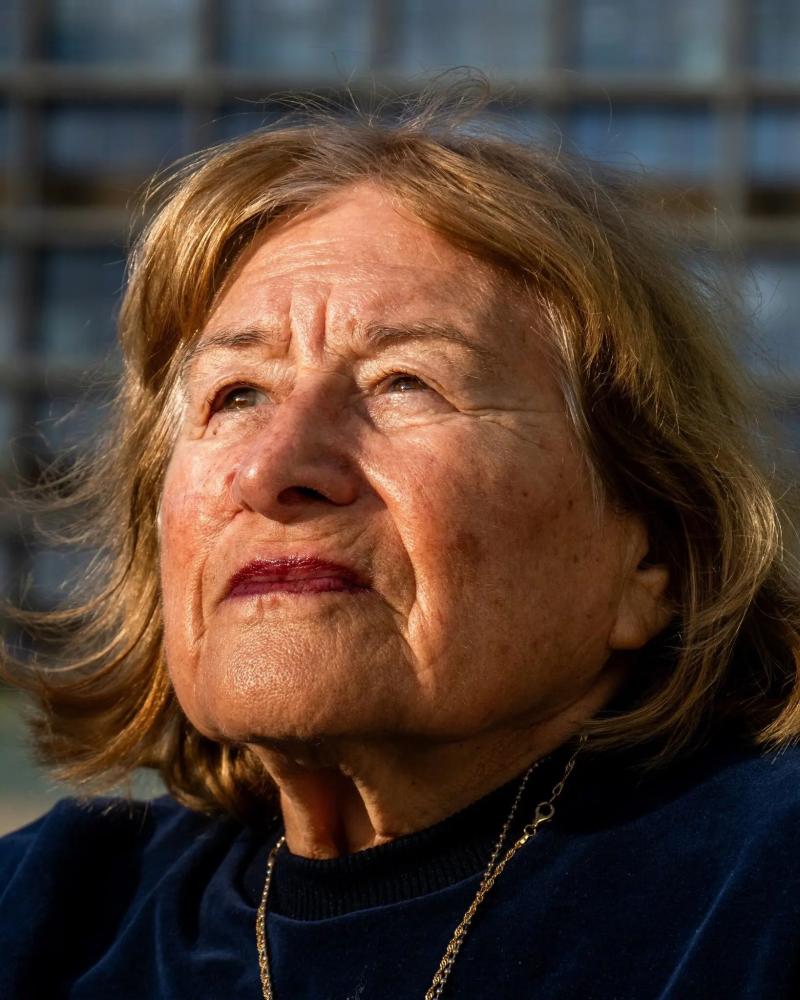
Judith Karp led a 1982 internal government investigation that found Israeli authorities unwilling or unable to confront settler crimes. “We were very naïve,” she now recalls.Credit...Peter van Agtmael/Magnum, for The New York Times
It soon became clear to Karp that the government was going to bury the report. “We were very naïve,” she now recalls. Zamir had been assured, she says, that the cabinet would discuss the grave findings and had in fact demanded total confidentiality. The minister of the interior at the time, Yosef Burg, invited Karp to his home for what she recalls him describing as “a personal conversation.” Burg, a leader of the pro-settler National Religious Party, had by then served as a government minister in one office or another for more than 30 years. Karp assumed he wanted to learn more about her work, which could in theory have important repercussions for the religious right. “But, to my astonishment,” she says, “he simply began to scold me in harsh language about what we were doing. I understood that he wanted us to drop it.”
Karp announced she was quitting the investigative committee. “The situation we discovered was one of complete helplessness,” she says. When the existence of the report (but not its contents) leaked to the public, Burg denied having ever seen such an investigation. When the full contents of the report were finally made public in 1984, a spokesman for the Justice Ministry said only that the committee had been dissolved and that the ministry was no longer monitoring the problem.
A WAVE OF VIOLENCE
On April 11, 1982, a uniformed I.D.F. soldier named Alan Harry Goodman shot his way into the Dome of the Rock mosque in Jerusalem, one of the most sacred sites for Muslims around the world. Carrying an M16 rifle, standard issue in the Israeli Army, he killed two Arabs and wounded many more. When investigators searched Goodman’s apartment, they found fliers for Kach, but a spokesman for the group said that it did not condone the attack. Prime Minister Begin condemned the attack, but he also chastised Islamic leaders calling for a general strike in response, which he saw as an attempt to “exploit the tragedy.”
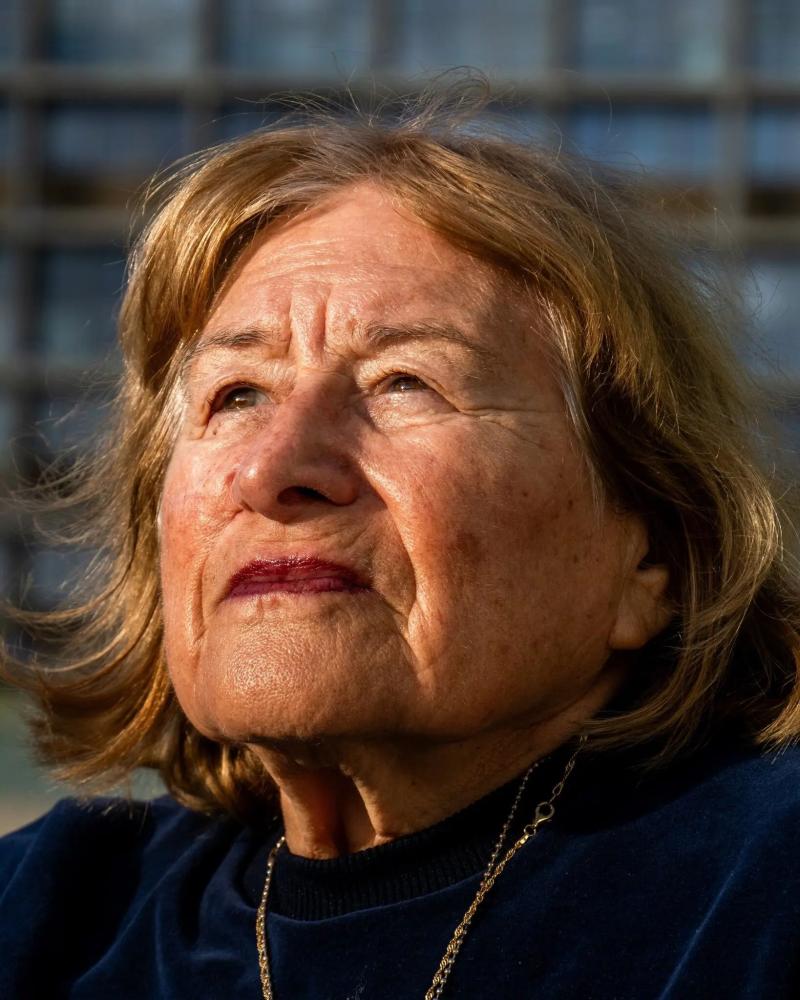
A riot outside the Dome of the Rock mosque in 1982, after Alan Harry Goodman killed two Arabs and wounded many others.Credit...Bettmann/Getty Images
The next year, masked Jewish Underground terrorists opened fire on students at the Islamic College in Hebron, killing three people and injuring 33 more. Israeli authorities condemned the massacre but were less clear about who would be held to account. Gen. Ori Orr, commander of Israeli forces in the region, said on the radio that all avenues would be pursued. But, he added, “we don’t have any description, and we don’t know who we are looking for.”
The Jewish Department found itself continually behind in its efforts to address the onslaught. In April 1984, it had a major breakthrough: Its agents foiled a Jewish Underground plan to blow up five buses full of Palestinians, and they arrested around two dozen Jewish Underground members who had also played roles in the Islamic College attack and the bombings of the Palestinian mayors in 1980. But only after weeks of interrogating the suspects did Shin Bet learn that the Jewish Underground had been developing a scheme to blow up the Dome of the Rock mosque. The planning involved dozens of intelligence-gathering trips to the Temple Mount and an assessment of the exact amount of explosives that would be needed and where to place them. The goal was nothing less than to drag the entire Middle East into a war, which the Jewish Underground saw as a precondition for the coming of the messiah.
Carmi Gillon, who was head of Shin Bet’s Jewish Department at the time, says the fact that Shin Bet hadn’t learned about a plot involving so many people and such ambitious planning earlier was an “egregious intelligence failure.” And it was not the Shin Bet, he notes, who prevented the plot from coming to fruition. It was the Jewish Underground itself. “Fortunately for all of us, they decided to forgo the plan because they felt the Jewish people were not yet ready.”
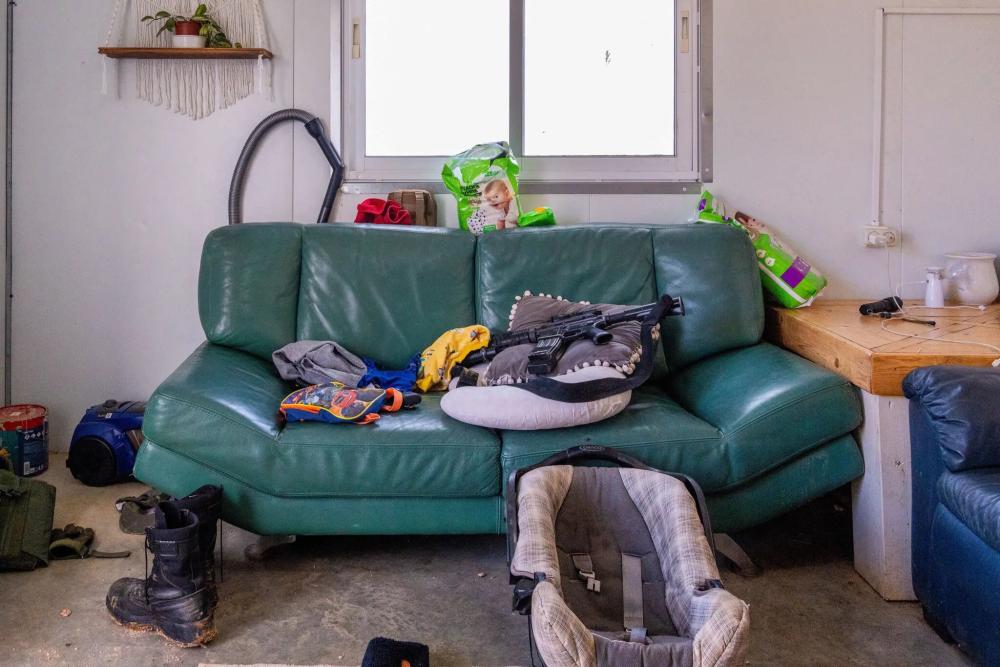
A home in an Israeli settlement in the West Bank. Since Oct. 7, some 7,000 settler reservists were called back by the I.D.F., put in uniform, armed and ordered to protect the settlements. Credit...Peter van Agtmael/Magnum, for The New York Times
PART II.
WARNINGS
“You have to understand why all this is important now,” Ami Ayalon said, leaning in for emphasis. The sun shining into the backyard of the former Shin Bet director was gleaming off his bald scalp, illuminating a face that looked as if it were sculpted by a dull kitchen knife. “We are not discussing Jewish terrorism. We are discussing the failure of Israel.”
Ayalon was protective of his former service, insisting that Shin Bet, despite some failures, usually has the intelligence and resources to deter and prosecute right-wing terrorism in Israel. And, he said, they usually have the will. “The question is why they are not doing anything about it,” he said. “And the answer is very simple. They cannot confront our courts. And the legal community finds it almost impossible to face the political community, which is supported by the street. So everything starts with the street.”
By the early 1980s, the settler movement had begun to gain some traction within the Knesset, but it remained far from the mainstream. When Kahane himself was elected to the Knesset in 1984, the members of the other parties, including Likud, would turn and leave the room when he stood up to deliver speeches. One issue was that the continual expansion of the settlements was becoming an irritant in U.S.-Israel relations. During a 1982 trip by Begin to Washington, the prime minister had a closed-door meeting with the Senate Committee on Foreign Relations to discuss Israel’s invasion of Lebanon that year, an effort to force out the P.L.O. that had been heavy with civilian casualties. According to The Times’s coverage of the session, Senator Joseph R. Biden Jr. of Delaware, then in his second term, had an angry exchange with Begin about the West Bank, telling him that Israel was losing support in this country because of the settlements policy.
But Israeli officials came to understand that the Americans were generally content to vent their anger about the issue without taking more forceful action — like restricting military aid to Israel, which was then, as now, central to the country’s security arrangements. After the Jewish Underground plotters of the bombings targeting the West Bank mayors and other attacks were finally brought to trial in 1984, they were found guilty and given sentences ranging from a few months to life in prison. The plotters showed little remorse, though, and a public campaign swelled to have them pardoned. Foreign Minister Yitzhak Shamir also made the case for pardoning them, saying they were “excellent, good people who have erred in their path and actions.” Clemency, Shamir suggested, would prevent a recurrence of Jewish terrorism.
In the end, President Chaim Herzog, against the recommendations of Shin Bet and the Justice Ministry, signed an extraordinary series of pardons and commutations for the plotters. They were released and greeted as heroes by the settler community, and some rose to prominent positions in government and the Israeli media. One of them, Uzi Sharbav, now a leader in the settlement movement, was a speaker at a recent conference promoting the return of settlers to Gaza.
In fact, nearly all the Jews involved in terror attacks against Arabs over the past decades have received substantial reductions in prison time. Gillon, the head of the Jewish Department when some of these people were arrested, recalls the “profound sense of injustice” that he felt when they were released. But even more important, he says, was “the question of what message the pardons convey to the public and to anyone who ever thinks about carrying out acts of terror against Arabs.”
OPERATIONAL FAILURES
In 1987, a series of conflicts in Gaza led to a sustained Palestinian uprising throughout the occupied territories and Israel. The First Intifada, as it became known, was driven by anger over the occupation, which was then entering its third decade. It would simmer for the next six years, as Palestinians attacked Israelis with stones and Molotov cocktails and launched a series of strikes and boycotts. Israel deployed thousands of soldiers to quell the uprising.
In the occupied territories, reprisal attacks between settlers and Palestinians were an increasing problem. The Gush Emunim movement had spread and fractured into different groups, making it difficult for Shin Bet to embed enough informants with the settlers. But the service had one key informant — a man given the code name Shaul. He was a trusted figure among the settlers and rose to become a close assistant to Rabbi Moshe Levinger, the Gush Emunim leader who founded the settlement in Hebron.
Levinger had been questioned many times under suspicion of having a role in multiple violent attacks, but Shaul told Shin Bet operatives that they were seeing only a fraction of the whole picture. He told them about raids past and planned; about the settlers tearing through Arab villages, vandalizing homes, burning dozens of cars. The operatives ordered him to participate in these raids to strengthen his cover. One newspaper photographer in Hebron in 1985 captured Shaul smashing the wall of an Arab marketplace with a sledgehammer. As was standard policy, Shin Bet had ordered him to participate in any activity that didn’t involve harm to human life, but figuring out which of the activities wouldn’t cross that line became increasingly difficult. “The majority of the activists were lunatics, riffraff, and it was very difficult to be sure they wouldn’t hurt people and would harm only property,” Shaul said. (Shaul, whose true identity remains secret, provided these quotes in a 2015 interview with Bergman for the Israeli Hebrew-language paper Yedioth Ahronoth. Some of his account is published here for the first time.)
In September 1988, Rabbi Levinger, Shaul’s patron, was driving through Hebron when, he later said in court, Palestinians began throwing stones at his car and surrounding him. Levinger flashed a pistol and began firing wildly at nearby shops. Investigators said he killed a 42-year-old shopkeeper, Khayed Salah, who had been closing the steel shutter of his shoe store, and injured a second man. Levinger claimed self-defense, but he was hardly remorseful. “I know that I am innocent,” he said at the trial, “and that I didn’t have the honor of killing the Arab.”
Prosecutors cut a deal with Levinger. He was convicted of criminally negligent homicide, sentenced to five months in prison and released after only three.
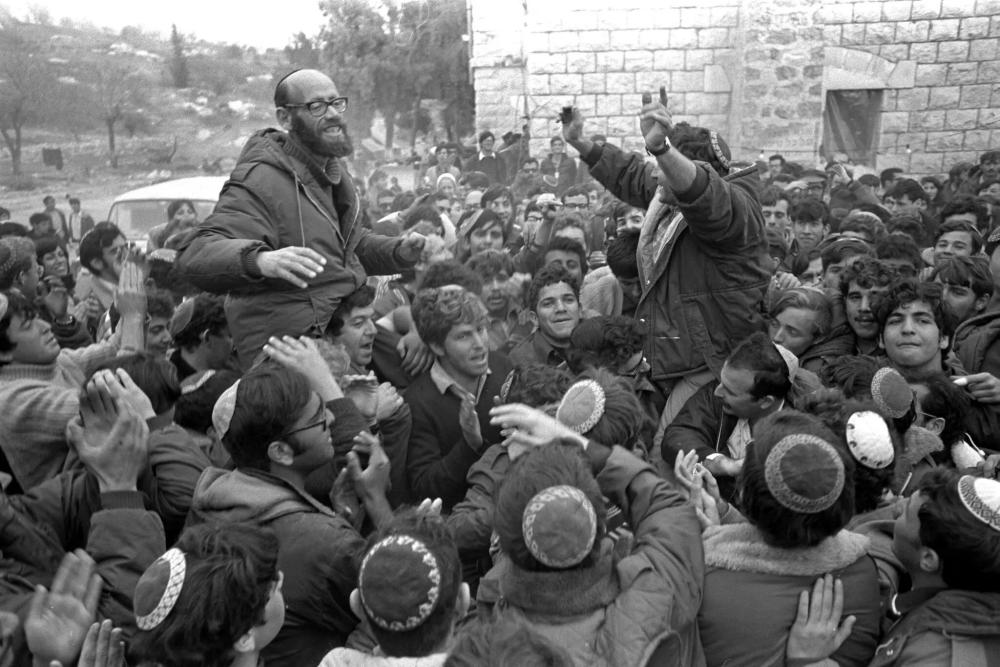
Rabbi Moshe Levinger (left) with followers in 1975. A leader of Gush Emunim, he declared the movement’s purposes on Israeli television. The Arabs, he said, “must not be allowed to raise their heads.”Credit...Moshe Milner/GPO, via Getty Images
Shin Bet faced the classic intelligence agency’s dilemma: how and when to let its informants participate in the very violent acts the service was supposed to be stopping. There was some logic in Shin Bet’s approach with Shaul, but it certainly didn’t help deter acts of terror in the West Bank, especially with little police presence in the occupied territories and a powerful interest group ensuring that whoever was charged for the violence was released with a light sentence.
Over his many years as a Shin Bet mole, Shaul said, he saw numerous intelligence and operational failures by the agency. One of the worst, he said, was the December 1993 murder of three Palestinians in an act of vengeance after the murder of a settler leader and his son. Driving home from a day of work in Israel, the three Palestinians, who had no connection to the deaths of the settlers, were pulled from their car and killed near the West Bank town Tarqumiyah.
Shaul recalled how one settler activist proudly told him that he and two friends committed the murders. He contacted his Shin Bet handlers to tell them what he had heard. “And suddenly I saw they were losing interest,” Shaul said. It was only later that he learned why: Two of the shooters were Shin Bet informants. The service didn’t want to blow their cover, or worse, to suffer the scandal that two of its operatives were involved in a murder and a cover-up.
In a statement, Shin Bet said that Shaul’s version of events is “rife with incorrect details” but refused to specify which details were incorrect. Neither the state prosecutor nor the attorney general responded to requests for comment, which included Shaul’s full version of events and additional evidence gathered over the years.
Shaul said he also gave numerous reports to his handlers about the activities of yet another Brooklyn-born follower of Meir Kahane and the Jewish Defense League: Dr. Baruch Goldstein. He earned his medical degree at Albert Einstein College of Medicine in the Bronx and in 1983 immigrated to Israel, where he worked first as a physician in the I.D.F., then as an emergency doctor at Kiryat Arba, a settlement near Hebron.
In the years that passed, he gained the attention of Shin Bet with his eliminationist views, calling Arabs “latter-day Nazis” and making a point to visit the Jewish terrorist Ami Popper in prison, where he was serving a sentence for the 1990 murder of seven Palestinians in the Tel Aviv suburb Rishon LeZion. Shaul said he regarded Goldstein at the time as a “charismatic and highly dangerous figure” and repeatedly urged the Shin Bet to monitor him. “They told me it was none of my business,” he said.
‘CLEAN HANDS’
On Feb. 24, 1994, Goldstein abruptly fired his personal driver. According to Shaul, Goldstein told the driver that he knew he was a Shin Bet informer. Terrified at having been found out, the driver fled the West Bank immediately. Now Goldstein was moving unobserved.
That evening marked the beginning of Purim, the festive commemoration of the victory of the Jews over Haman the Agagite, a court official in the Persian Empire and the nemesis of the Jews in the Old Testament’s Book of Esther. Right-wing Israelis have often drawn parallels between Haman and Arabs — enemies who seek the annihilation of Jews. Goldstein woke early the next day and put on his I.D.F. uniform, and at 5:20 a.m. he entered the Cave of the Patriarchs, an ancient complex in Hebron that serves as a place of worship for both Jews and Muslims. Goldstein carried with him his I.D.F.-issued Galil rifle. It was also the Muslim holy month of Ramadan, and on that morning hundreds of Muslims crowded the hall in prayer. Goldstein faced the worshipers and began shooting, firing 108 rounds before he was dragged down and beaten to death. The massacre killed 29 Muslim worshipers and injured more than 100.
